Your Role in Localisation





















Today’s world is faced with increasingly more complex and interconnected social, ecological and economic problems. In response, our global cooperation sector has been forced to depart from linear, one-size-fits-all solutions to a more nuanced understanding of the multiple realities that affected communities face. It’s understandable, considering these huge challenges, that in our day to day as practitioners, we are caught up in the doing.
During cinfo’s Immersion Day, we reflected on our role, as sector professionals, in making this doing more impactful and inclusive, in creating more equitable partnerships, and exploring what locally led practice in a future system could look like. We slowed down the doing and were invited to move into the being, reflecting on what skills we really need to make a shift in ourselves and our systems.
A more conscious and intentional engagement not only enriches our interactions, but also influences our responses, potentially even changing the trajectory of outcomes.
Our attitudes inform how we arrive in the spaces and environments we engage and work in, how and how justly we collaborate, and how we relate and care for others and the world. In turn, this influences our processes, systems, and the way we do 'business'. Yet how often do we ask, “How important is our relationship to ourselves?” And “Why does this matter when trying to get to the bottom of locally led practice?”


As well-intentioned individuals, we are still often unaware of biases, beliefs and narratives that may perpetuate inequities within our relationships and may negatively impact our environment and collaboration with partners and communities. In our 'localisation' efforts, what we see, the visible, are often attempts to remedy structure. Yet this is the tip of the iceberg. Making visible what is going on beneath the surface – those patterns that have influenced our functioning, coupled with mental models that have stood in the way of change – is key. And the key to unlocking these lies only in a better individual understanding of self.
By solely focusing on structural change and action, we are reactive. However, thinking about patterns and trends in our behaviour allows us to anticipate change and identify the mental shackles that, when released, open our minds to more transformative thinking. Thinking about self and system equally will open doors for a more sustainable change.
“Without inner change, there is no outer change. Without collective change, no change matters.” At cinfo, we hope to accompany you and your organisation to find and connect the dots so that new possibilities can emerge. Let this gazette serve as a next step on this journey together. Enjoy the read and the journey ahead!
“Without inner change, there is no outer change. Without collective change, no change matters.”*
 Shazia Islamshah
Thematic Lead, Immersion Day cinfo
Shazia Islamshah
Thematic Lead, Immersion Day cinfo


Organisations in the global cooperation sector are constantly challenged to increase the effectiveness of their efforts and to reposition themselves in an ever-changing context. In this dynamic field, cinfo is regarded as a strategic centre of competence. By facilitating communities of practice and conducting studies, we play a pivotal role in shaping discussions around staff skills, competencies and sectoral challenges. Our biennial Immersion Day provides a platform for a deeper understanding of the sector’s key issues.

Our most recent Immersion Day, in November 2023, focused on localisation. It aimed to encourage deep reflection on each participant’s role in promoting equitable partnerships between global cooperation actors from the Global North and the Global South.
Over the past three decades, conversations within the development and humanitarian sector have increasingly centred on the concept of localisation, also known as the decolonisation of the sector. This approach advocates the principle of local ownership and the empowerment of local communities, actors and stakeholders to take a leading role in development and humanitarian initiatives. The essence of localisation is to ensure that local entities are not only involved but at the forefront of decision-making processes. The aim is to move away from externally driven agendas towards initiatives designed, managed and implemented by those directly affected by these efforts.
This represents a fundamental shift in the approach to aid and development, recognising the importance of local knowledge, expertise and skills in creating effective and sustainable solutions.
Many examples show we are still not there yet:
• local actors must meet the requirements set by Global North organisations and donors
• their expertise is often undermined
• a heavy reliance on intermediaries often leads to unnecessary expenditure of human and financial resources
A fundamental shift is needed to achieve a more inclusive and empathetic development and humanitarian sector.

cinfo proposes a systemic change approach, which combines personal and interpersonal reflection on power dynamics, privilege and bias.
Some issues can be raised dozens of times without provoking change. Aware of the importance of format in delivering content, we took an interactive approach to Immersion Day, combining presentations, workshops, individual reflection and peer exchange. The “Invention Ramp” in Biel-Bienne was the setting for a programme designed to inspire and engage.
This gazette serves several purposes:
• it aims to allow the 70 participants to reflect on the content of the event
• it provides a tangible format from which future discussions can be built
• it endeavours to include those who were not present at Immersion Day on the journey.
All these aspects converge on a central idea: Immersion Day is only one part of an ongoing process that must continue. It is a milestone in the broader context of a transformative journey for all professionals.
In our mission to deepen the understanding and practice of localisation, cinfo recognises the indispensable value of collaboration and diversity of expertise and methodologies. To create and facilitate Immersion Day, we joined forces with trusted partners such as Compassion Integrity Training (CIT) Humanity and the Global Mentoring Initiative (GMI). Together, we aim to enrich dialogue and expand the toolkit available to address the complex challenges of global cooperation.


CIT Humanity brought its expertise in cultivating compassionate integrity within and between individuals. The cornerstone belief of nurturing this value can significantly deter actions that undermine personal and collective well-being. Their approach underscores the importance of compassion in achieving individual and collective flourishing.
GMI, with its extensive experience in humanitarian consulting, specialises in localisation. Their involvement ensured that participants gained a nuanced understanding of the sector’s challenges and equipped them with technical tools to foster effective collaboration and partnerships.
Reflecting the dual focus of our Immersion Day, this gazette is structured to guide you through a transformative journey. The morning session, designed with CIT Humanity, introduced self-reflection exercises to enhance intrapersonal and interpersonal relationships. In partnership with GMI, the afternoon session translated these personal insights into actionable strategies in the context of global cooperation.
This gazette follows the structure of our Immersion Day:
• From pages 10-19, you will find guidance on topics such as deep listening and the mind-body connection, as well as input from participants.
• Pages 22-39 focus on the individual’s role in the global cooperation system, analysing power dynamics and envisioning a desirable future for the sector. We also give you concrete tips on how to take action.
This structured approach reflects our commitment to approaching localisation through an individual lens, a relational lens, and a broader systemic perspective.



Imagine a world where global cooperation is genuinely inclusive and equitable. The key to this vision lies within each of us.
How we are connected to our inner world and how our emotions and thoughts shape us can profoundly affect the quality of our interactions with others. By strengthening our mind-body connection, we can cultivate self-regulation and self-compassion, making us more aware of our reactions to others. This enables us to act with intention and listen with empathy and mutual respect – essential attitudes for better collaboration with our peers and local partners.
Through increased self-awareness, the needs of our peers and partners become clearer, contributing to a more impactful and truly collaborative global cooperation.
“Relating to Self” is more than an exercise; it’s a journey towards self-awareness and emotional balance. Whether you’re exploring this alone or with others, the key is to approach these practices with openness and curiosity.
As you progress, you may find deeper insights and a renewed sense of connection with yourself.
Duration: ~10 minutes
• Find a quiet place. Sit or lie down comfortably.
• Close your eyes and focus on your breathing.
• Gradually move your attention to different parts of your body.
• Notice any sensations, tension or well-being without judgement.
• After the body awareness exercise, take a few minutes to do some journaling.
• Write down what you felt in your body and any emotions that arose.
• Reflect on how these feelings relate to your current state of mind.
(optional for teams)
• Get into a small group and share your experiences.
• Discuss how body awareness affects your emotional state.
• Each person speaks for two minutes without interruption.
• Keep the space respectful and non-judgmental.
Create a safe and calm environment.
Use gentle prompts to guide your team through the exercises.
Encourage openness while respecting personal boundaries.
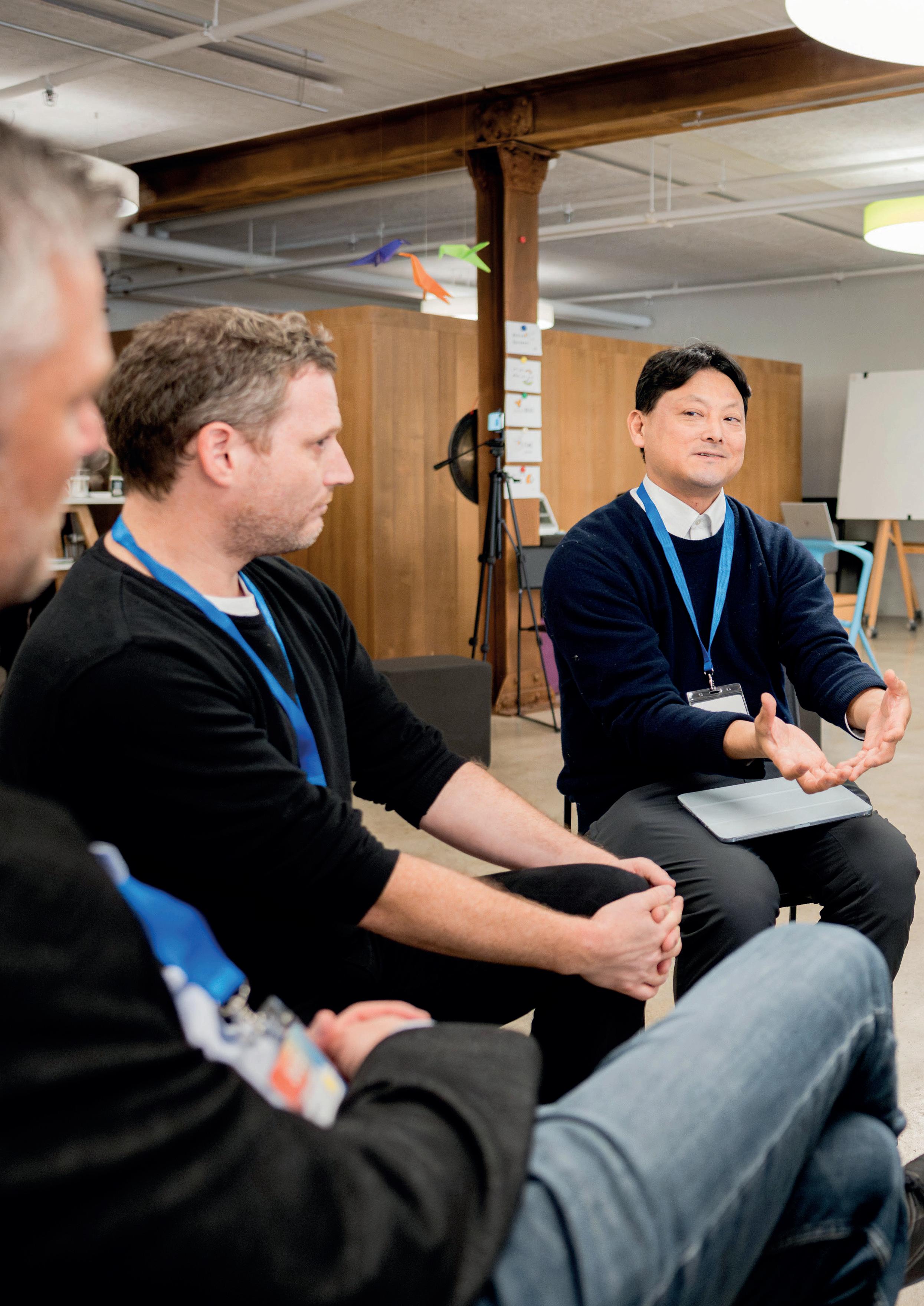

Imagine a future where every voice in global cooperation is heard and valued. This future isn’t out of reach – it should be a prerequisite for achieving local ownership and equitable partnerships.
The “Me & others” exercises bring this vision to life by highlighting the power of connection. They teach us that our interactions, steeped in personal and collective identities, are the key to creating partnerships that are not only inclusive but truly give local communities the respect and ownership they deserve.
By embracing these connections and cultivating our listening skills, we unlock the potential for more equitable and collaborative global cooperation, where local voices lead and shape outcomes.
The following exercises, while simple, are powerful tools for fostering empathy, a cornerstone in the journey towards local ownership and systemic change.
By breaking down barriers, cultivating a culture of deep listening and valuing diverse identities, we move closer to the principle of “What needs to change in ourselves and our system?”.
As a team, incorporate these exercises into your daily routine at work and embrace the growth that comes from openness and honesty.
Understanding and respecting local voices starts with refining our own listening skills. This exercise is essential to this goal.
Partner up:
Find a colleague in your organisation with whom you’re less familiar. This exercise works best with people you don’t know well.
Engage in conversation:
Take turns discussing three questions:
• “Why am I here today?”
• “What do I bring that is both visible and invisible?”
• “Reflecting on our theme of local ownership, how can I personally influence outcomes, and what practical actions can I take?”
Practice active listening:
When it’s your turn to listen, listen attentively and without interruptions. After both have spoken, share your reflections on the experience.
In the quest for local ownership, recognising diversity is key. This exercise invites you to explore the different aspects of your identity, facilitating a dynamic exchange that reflects the complexity of our global systems.
Stay in pairs:
Continue with the same partner(s).
Question and answer:
• Person X asks person Y, “Who are you?”
• Person Y answers with different aspects of their identity, such as “I am a parent”, “I am an artist”, etc.
Keep it flowing:
Continue for two minutes without pausing, then switch roles.
Reflect together:
After each person has had a turn, discuss how the activity made you feel and what you discovered about each other.
Who am I?
Where do I come from?
During Immersion Day, the 'Story of Me' board served as a visual representation of the participants’ journey, mirroring the unique diversity of those involved.
Four seemingly simple questions were posed, and, as it happened, they elicited a wide range of responses. Some of these reflections are shared here. They not only offer a glimpse into the diverse narratives that define each individual’s path, but also invite you to explore the deeper stories that shape our identities and intentions.
What am I bringing?
What is my intention for today and the future?
I’m made up of all the elements that shapeidentity.my
I’m a positive thinker, solution, and resource oriented.
I’m on a journey... wondering what’s next.
I come from a place of curiosity and hope.
I’m a particle of this world.
I’m a thankfulhappy,person.
I come from a country that is enoughrich/lucky to worry about countries.other
I’m in the middle of nowhere (positive).
I grew up in this safe country (Switzerland).
I’m a friend, a partner, a adaughter, sister.
Solidarity!
My home is in many places.
I come from a white,background.privileged
I bringexperienceconcrete of project management with local and national leaders.
I bring an open heart and some tension.
My intention for today is to find a way.
I bring a lack of knowledge.
Action instead of excuses!
I bring eagerness to learn.
Sensitivity to different backgrounds.
My intention for today is to interact.
I come from a farming family.
I bring compassion.
I bring motivationafor self-reflection.
To change things for the better.
To use my time on earth to leave it in a better state than when I arrived.
To build the next step.
To discoverlearn,and be true myself.to
To learn how to bring together NGOs, business, and thesector.public
To systemschange of power.



 Musician Amaru Küng opening the afternoon of Immersion Day with her creation ‘Uhuru’ - which means ‘freedom’ in Swahili.
Power dynamics - a key topic of discussion during the day.
Musician Amaru Küng opening the afternoon of Immersion Day with her creation ‘Uhuru’ - which means ‘freedom’ in Swahili.
Power dynamics - a key topic of discussion during the day.
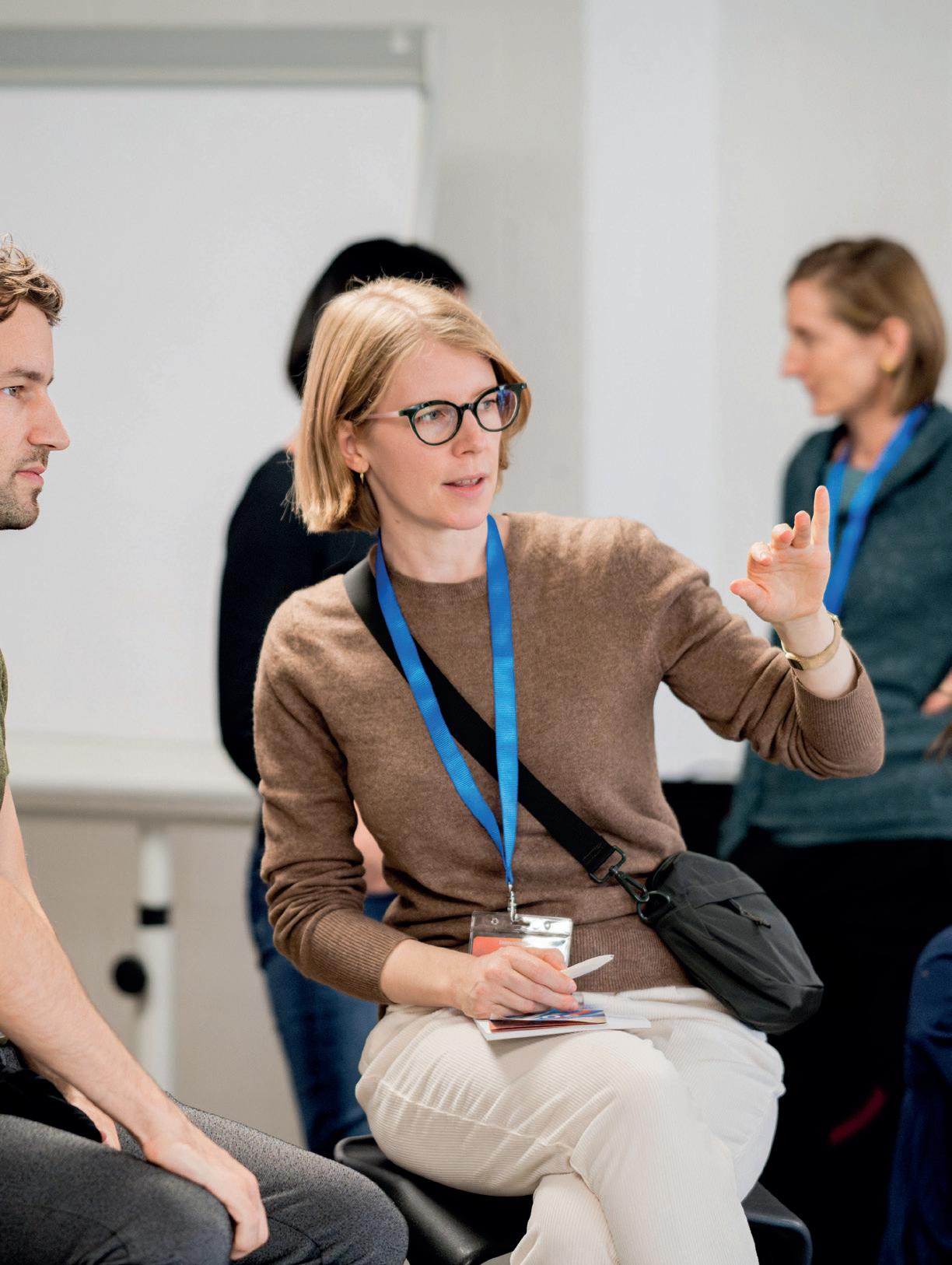
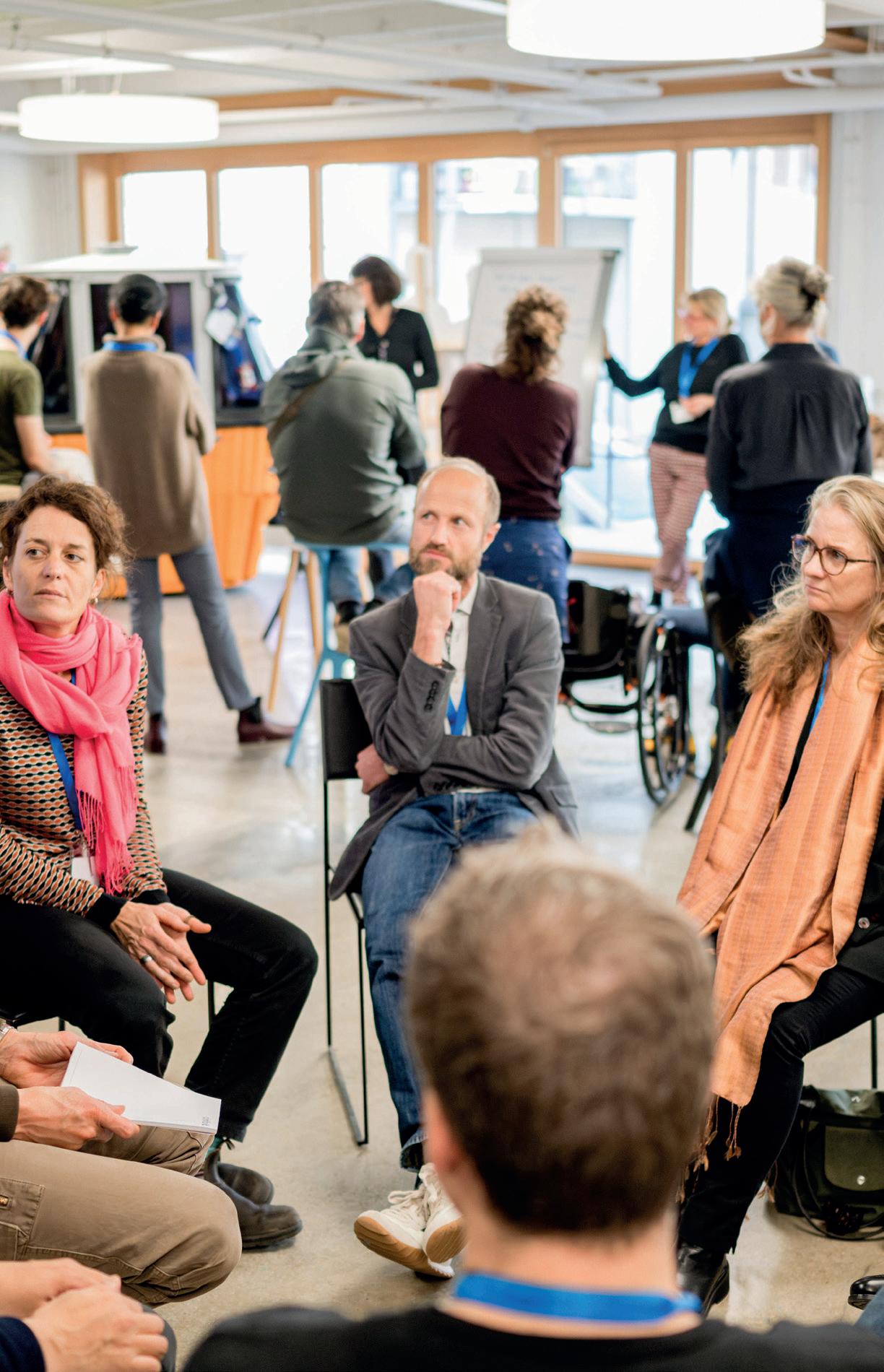
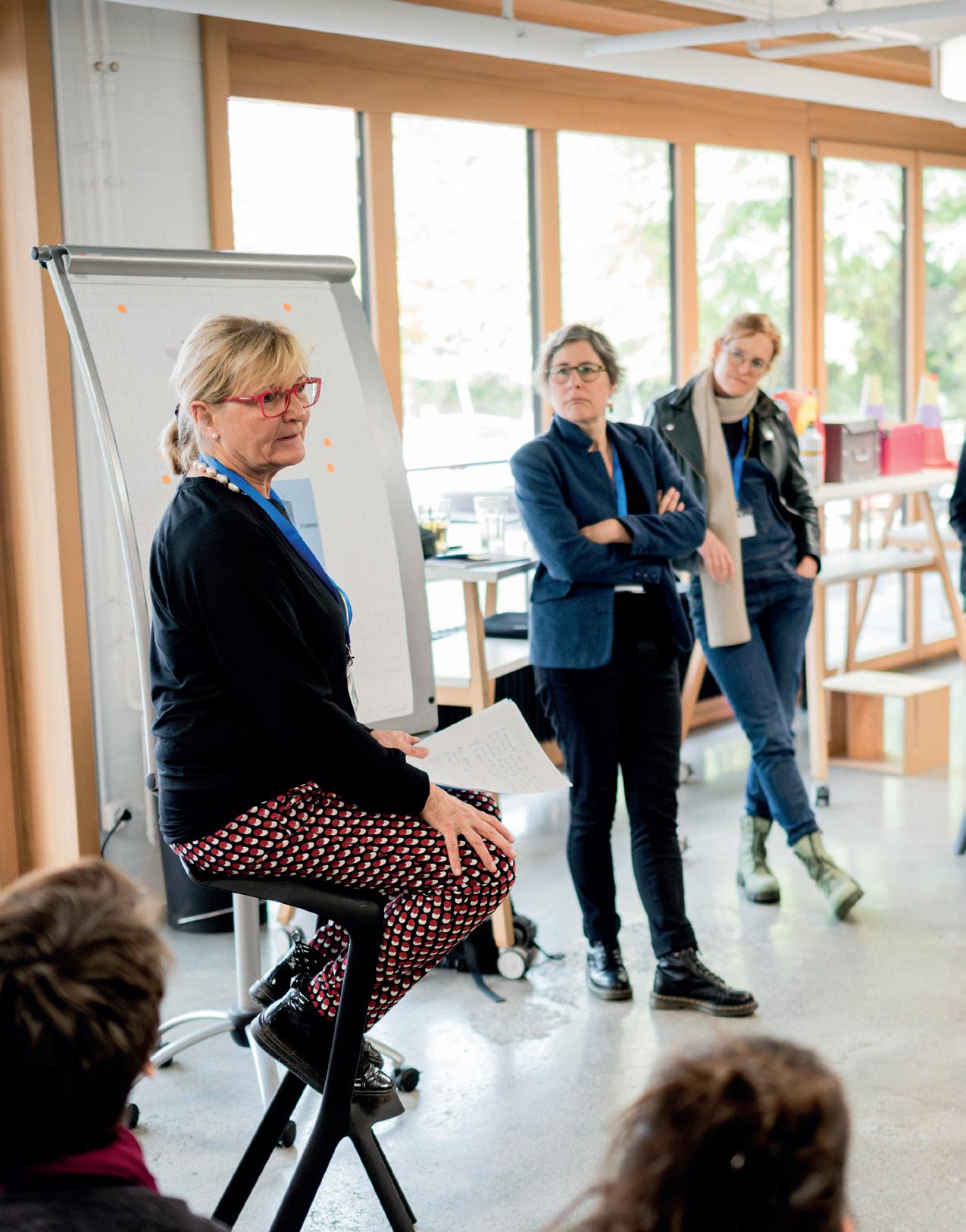
Immersion Day explorers engaging in a presentation delivered by one of the ‘Story chairs’.
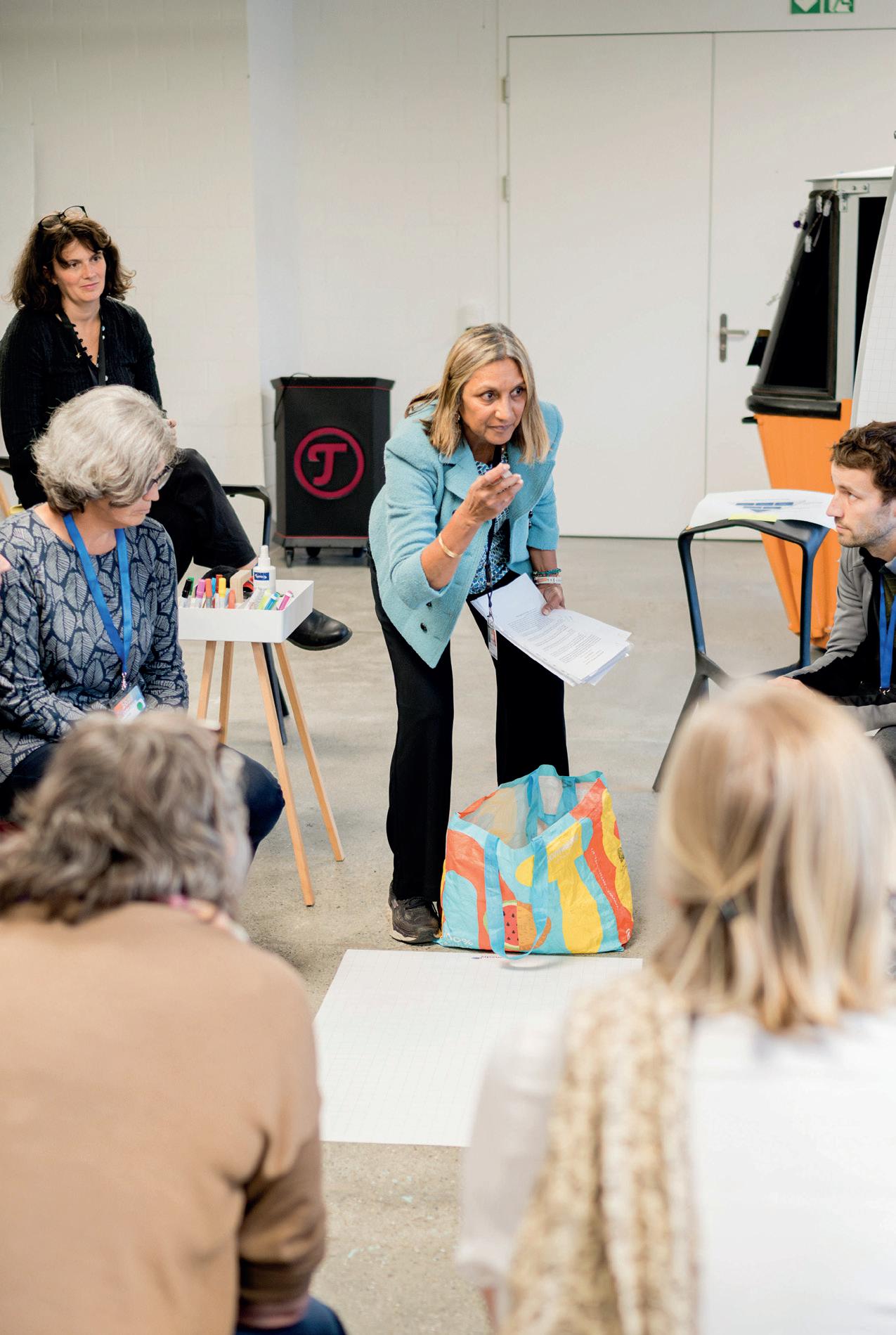
The ‘3D mapping’ activity challenging explorers to imagine a future aid sector.
Immerse yourself in a visual exploration of five key concepts essential for fostering equitable partnerships in global cooperation. The following principles have the power to transform everyday alliances into extraordinary synergies. Each concept is a stepping stone to building stronger, more effective collaborations.
“Foster a culture of trust and respect, embracing openness and new perspectives.”
1
“Turn challenges into collaborative victories, seeking solutions that benefit all.”
“
Unite in action and spirit around a shared, powerful vision.”
2
“Build a foundation of unwavering trust and proactive communication.”
“Value the full spectrum of each partner’s skills and experience beyond mere roles.”
4
During our Story Chair session, Martin, who currently works for a Swiss NGO, shared insights from a community project in northern Iraq he had worked with in a previous job. Funded by a european donor and implemented through a government development agency, the initiative aimed to combat gender-based violence (GBV), address child protection concerns, and strengthen local capacity. Martin’s narrative highlights the challenges faced in implementing this ambitious project.
One of the initial challenges of this programme was to bridge the gap created by the deceptive "trickle-down" effect of humanitarian assistance. In reality, funds from the donor were channelled through various intermediaries, each taking a percentage of the original budget. This process raised questions about the efficiency of aid distribution and whether the intended impact was reaching people on the ground.
Martin’s team selected seven local NGOs to implement projects focusing on child protection and GBV activities. The team’s role was to support these NGOs by developing their capacity for protection and organisational skills. GBV training needed to take into account local cultural sensitivities. Adapting the approaches developed by INGOs proved to be challenging.
They also invited local NGOs to submit project proposals to the implementing INGO. However, they requested that these projects be modified to fit the reporting guidelines and indicators expected by the INGO and the donor (as opposed to designing projects according to their own needs). This demonstration of a top-down relationship echoed the local partner’s feeling of being at the ‘bottom’ of the chain, with little agency.
Power dynamics - a key topic of discussion during the day.
In the Story Chair, Feven shared with the participants her diverse experiences from over two decades of working in the NGO sector in Ethiopia. As the former head of two Ethiopian-based NGOs, she navigated a complex web of intermediaries tasked with channelling funds from donors to local actors implementing programmes. The intricate involvement of various stakeholders, each with unique requirements, made partnerships and collaboration challenging for local NGOs. In addition, the organisation's activities were hampered by significant overhead costs.
In 2015, Feven embarked on a new journey by setting up her consultancy, carefully selecting projects aligned with her values. At the same time, she joined FocusBirth, an association dedicated to improving maternal health and newborn care. In her role as country representative, she cultivated working relationships based on common understanding, honest communication, and trust. The collaborative environment fostered horizontal relationships that shared decision-making power and empowered local actors to take ownership. This resulted in allowing them to focus on delivering impactful programmes.
Since 2019, FocusBirth has successfully trained over 480 health workers in 53 grassroot healthcare centres with the help of ‘ten trainers of trainees’ and a focus on strengthening maternal and newborn care capacity. Despite limited funding, the organisation is making a significant impact. FocusBirth works with donors who have lighter requirements based on a relationship of mutual understanding and regular follow-ups.
Having experienced diverse approaches to NGO programme implementation, Feven is adamant that partnerships must embody flexibility, transparency, and frequent communication. These principles not only enhance efficiency but also increase overall impact.
The stories of Martin and Feven give us insight into different aspects of international cooperation partnerships. Both testimonies show that successful partnerships depend on a wide range of issues and criteria. Let’s examine these stories through three different lenses.
Misunderstandings, lack of trust, and a lack of adaptability and flexibility on the part of INGOs and donors remain common and recurring challenges in humanitarian and development partnerships. The experiences of both Martin and Feven vividly illustrate these issues.
In Martin’s case, the INGO’s lack of cultural sensitivity is evident in its attempt to impose standardised approaches and training programmes on a community with its own unique cultural norms and values. Similarly, Feven’s account highlights partnerships characterised by rigid, bureaucratic requirements, signalling a lack of trust and flexibility on the part of international actors towards their national counterparts. Adaptability was expected to be a one-way street, revealing an imbalanced relationship of decision-making power and ownership between INGOs and national NGOs.
These examples of partnerships show how bureaucratic requirements and mistrust are barriers to effectiveness and impact. Feven explained how bearing the considerable overhead costs significantly impacted her NGO’s finances. In addition, the short project duration put the NGO and its staff in a precarious situation due to the high dependence on external and volatile funding. In Martin’s case, the multiple stakeholders involved in the project made the processes cumbersome and overly bureaucratic. These accounts highlight the issue of funds being ‘intercepted’ by each intermediary, resulting in a much smaller proportion of the contribution reaching the intended communities.
The issues above significantly impact project sustainability and the relationship quality between stakeholders. Unfortunately, the typical design of humanitarian and development projects does not facilitate long-term planning for national actors, either the NGO or its partners, mainly due to the structures and processes already in place. This is compounded by the complex demands that INGOs place on their local partners. As a result, these combined factors hinder the potential for more short-term international projects to develop into lasting, equitable partnerships based on mutual understanding and trust.
Dedicated to your notes, thoughts, sketches and reflections. Use this double-page spread as your own personal canvas - no rules, just space for your inspiration.
How does power operate? How are the interests of different stakeholders marginalised or excluded from decision-making? What strategies can be implemented to ensure inclusion? These questions form the basis of the Power Cube, initially developed in 2003 by Gaventa. This dynamic model offers insights into the multifaceted nature of power, inviting us to move beyond simplistic assumptions.
The Cube depicts power as distributed across three continuums.
the levels and places of engagement
The Power Cube highlights the importance of understanding power dynamics across various levels and sites of engagement. It distinguishes between international, national, and local contexts, shedding light on how global influences can positively or negatively impact livelihoods. This emphasis on different levels enhances our understanding of local dynamics.
how spaces of power are created
The concept of ‘space’ refers to arenas where decision-making and power dynamics occur. The Power Cube classifies spaces as ‘provided’ (controlled by primary decision makers), ‘invited’ (created under external pressure, for example, when policymakers invite outsiders to express their views), and ‘claimed’ (opportunities for the less powerful). The Cube helps to understand and navigate these spaces, improving the use of provided spaces, creating more invited spaces, and facilitating the claiming of space through negotiation.
the degree of visibility of power
The visibility of power depends on various dimensions. It can be visible, corresponding to the traditional perception of power as negotiated through formal structures, institutions, and procedures. Those with actual control over decision-making can also hide power – this reveals how individuals and institutions maintain their influence, sometimes disregarding the interests or agency of less powerful groups. Finally, invisible power operates by shaping an individual’s perception of their societal role, which explains why some resist challenging existing power dynamics.
Power is at the heart of global cooperation in all its forms and dimensions. A shift in power dynamics is an inevitable step in achieving localisation, more equitable partnerships and greater impact. Following our introduction to the Power Cube, we invite you to have a look at how individuals can actively serve as agents of change within their respective organisations.
Our blog article explores three key topics:
• Understanding power dynamics: the key to systems change
• The layers of systems change: beyond structural adjustments
• Cultivating self-awareness: the foundation for localised transformation


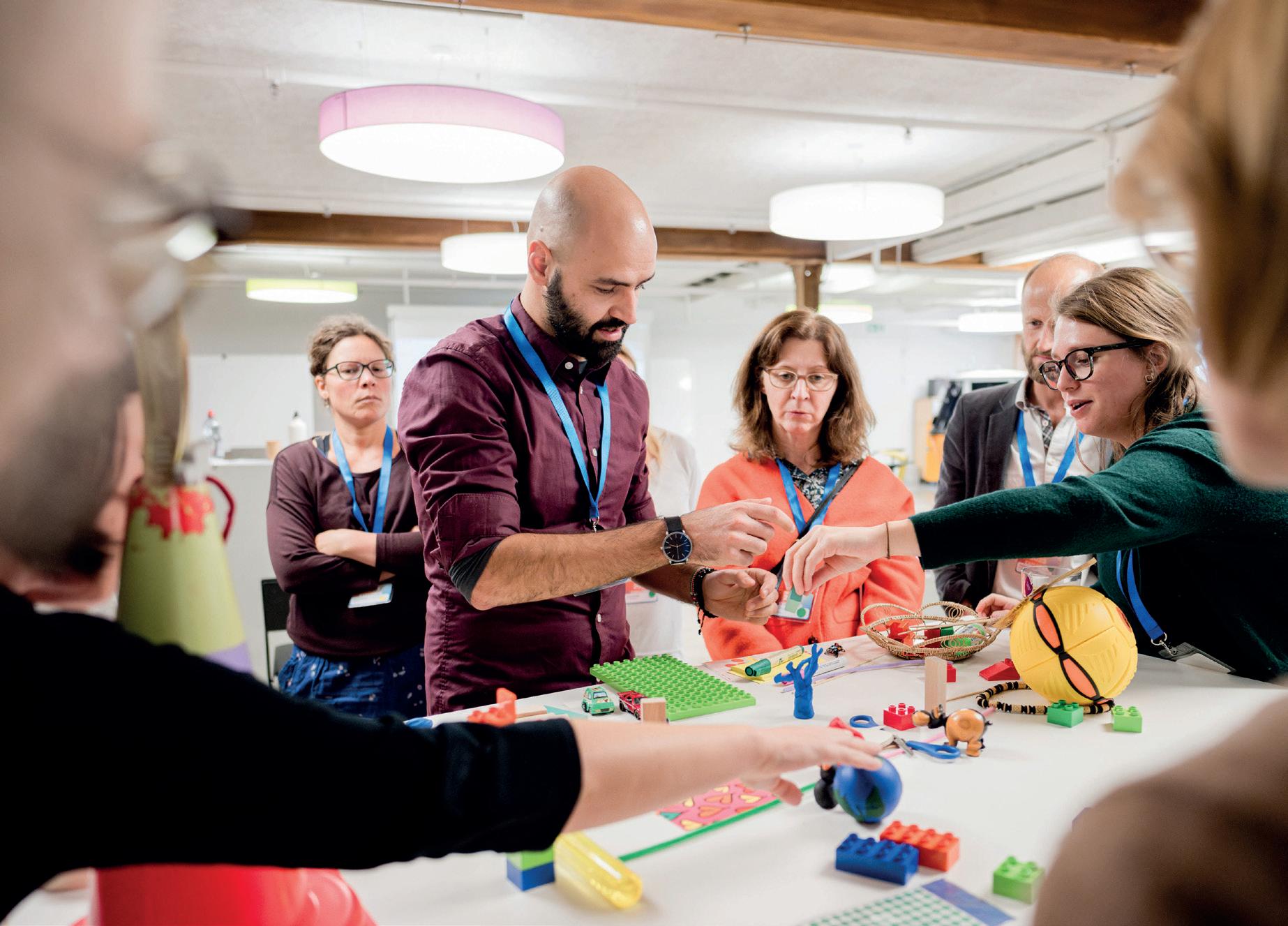
During the 3D mapping session, participants engaged in hands-on activities to inspire and drive systemic change.

The exercise consisted of different objects that the participants could choose and attach their own meaning to.

Each participant was free to make changes to the 3D model. Significant changes were only validated if they were supported by the rest of the group.


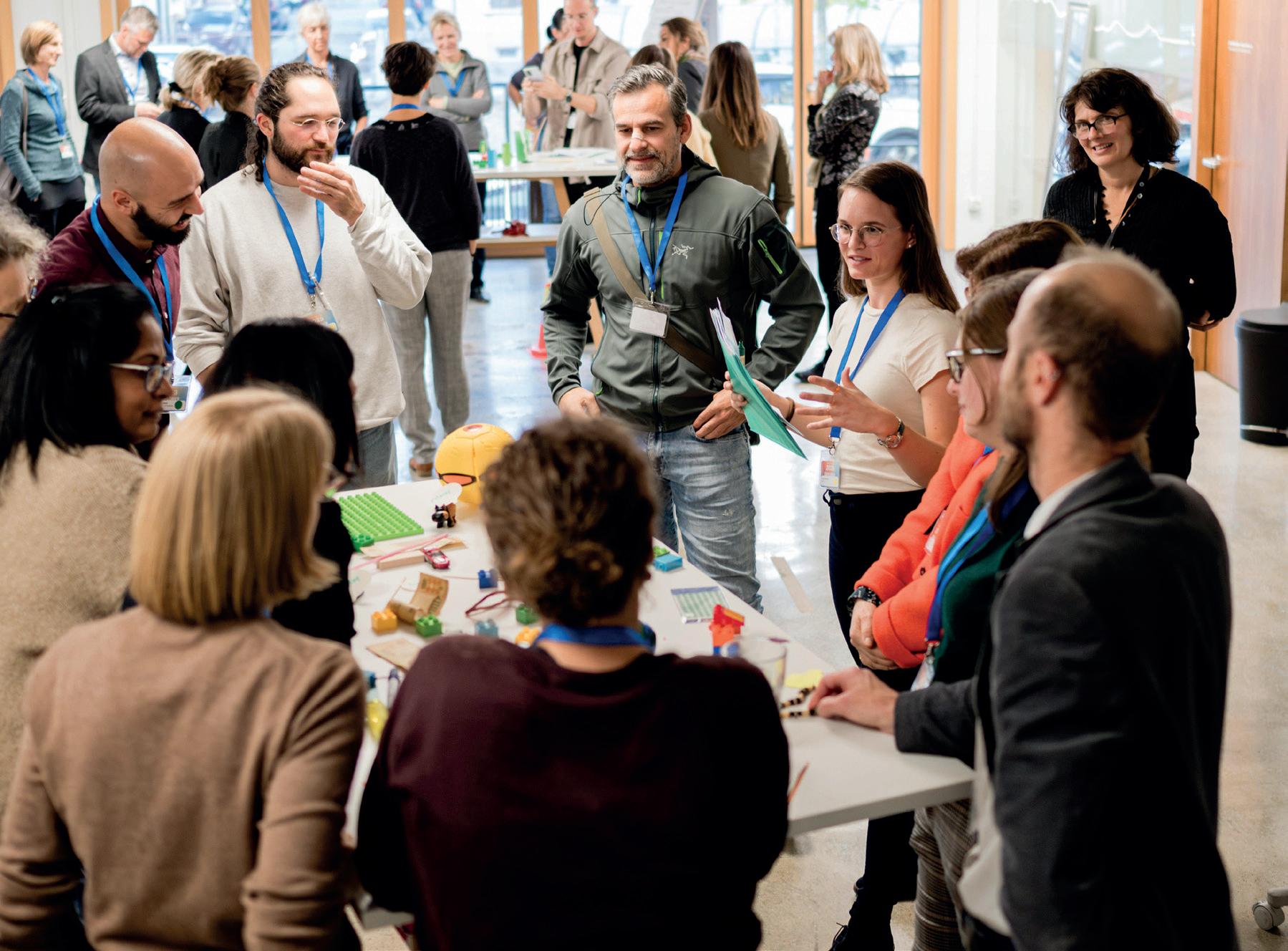
Led by cinfo and GMI facilitators, each of the four groups consisted of a dozen participants who worked together to complete the exercise.
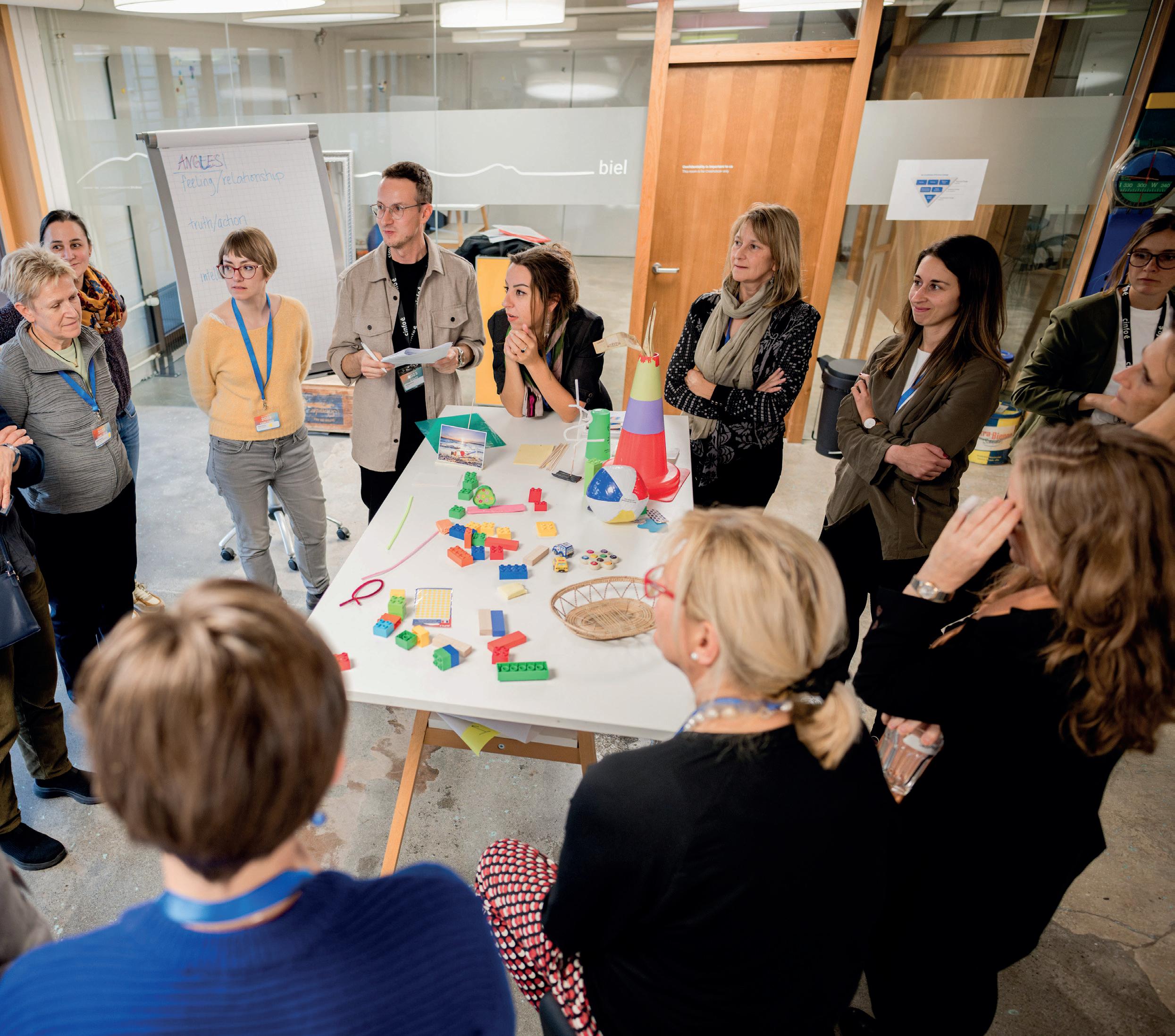
Deep
listening was a key component in successfully completing the exercise.
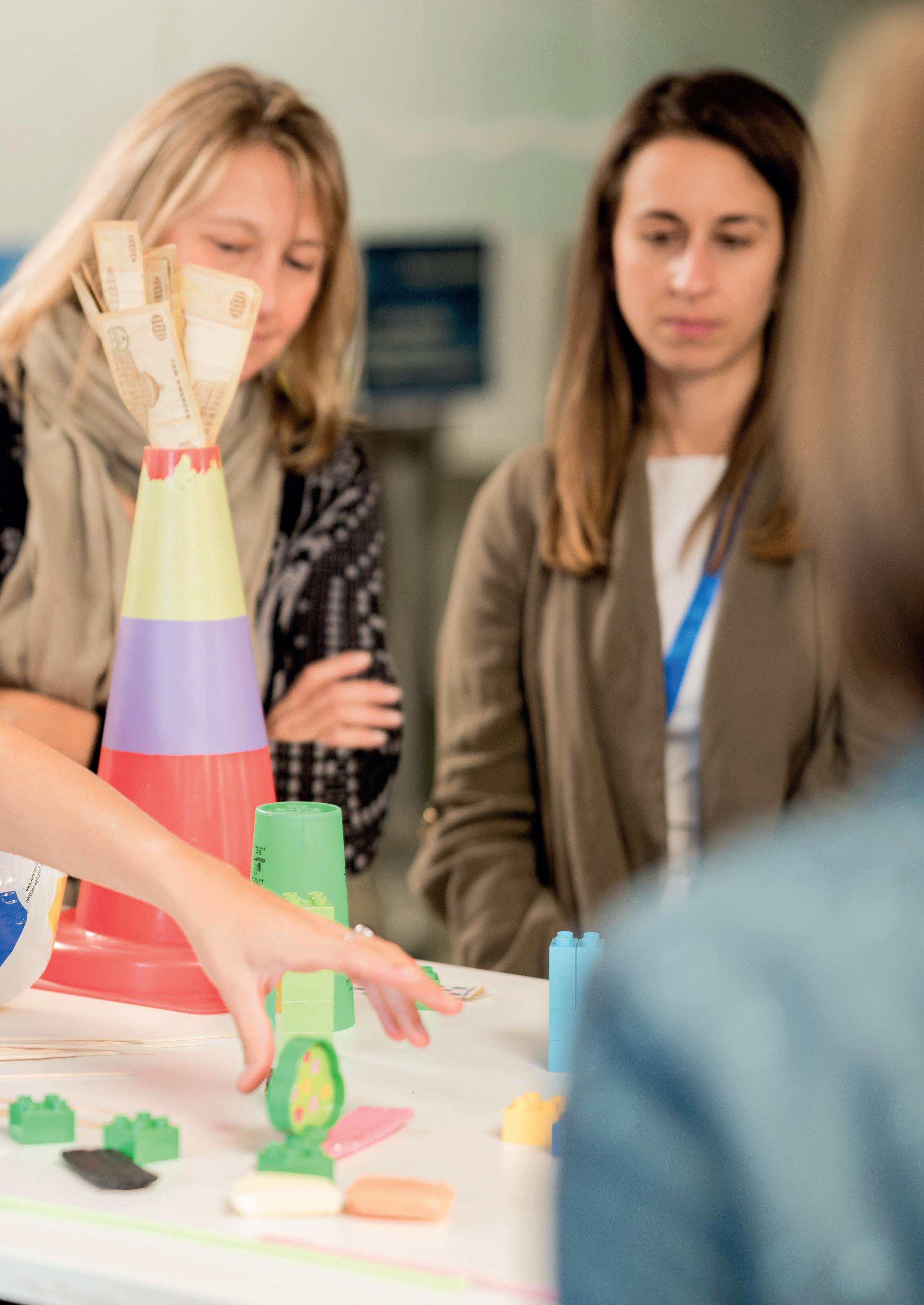
In the global cooperation sector, where the system’s complexities can often feel abstract, 3D mapping offers a tangible, hands-on approach. It allows teams to experience a physical representation of current relationships and dynamics and to visualise future scenarios.
Through this visualisation and manipulation, participants actively identify areas of the system they wish to modify and explore how these potential changes could contribute to more favourable outcomes.
In other words, 3D mapping goes beyond simply understanding the present and is a powerful tool for forward-thinking development.
This step helps participants visualise and critically analyse the current global cooperation system.
• As a facilitator, begin by explaining the objective: to create a physical model representing the current state of the system.
• Provide a variety of materials and objects (lego bricks, figures, string, etc.). Explain that each piece will symbolise a different element in the system, such as stakeholders, resources, challenges and dynamics.
• As a group, start building the model. Guide participants to place and connect materials in a way that represents their understanding of the system, incl. the relationships and dynamics between different elements. Facilitate the discussion to identify key components and different stakeholders, and how they interact.
• Once the model is complete, ask participants to share their thoughts on what it reveals about the current state of global cooperation, incl. any insights or surprises that emerged during the building process.
• Ask participants to consider the model’s relational aspects (how elements are interconnected), action-oriented elements (activities represented), intellectual components (ideas and beliefs represented) and purpose-oriented aspects (goals of the system).
• Encourage participants to articulate their feelings, identify conflicts and explore potential changes. They should consider how different elements influence each other and what new possibilities might emerge from these interactions.
This step aims to transform the model from its current state to an ideal future scenario.
• Clarify that this transformation should reflect a more equitable and effective system of global cooperation.
• Encourage participants to make changes iteratively, discussing and refining each change. Ensure each change is intentional and symbolic, representing a shift towards a desired future state.
• Foster a sense of collective ownership and creativity as the group works together to create a shared vision of the future, discussing how each change contributes to that vision.
This step encourages participants to critically analyse and actively engage in systemic change, thereby strengthening their role as agents of change.
• Lead participants in a comparison of the two models. Ask them to note changes in structure, presentation of relationships and any new elements introduced.
• Encourage participants to share their insights on how certain changes could be implemented in the real world.
• Help participants to identify the changes that have been most influential in moving the model from its current state to the envisioned future and how these will impact their work.


Dedicated to your notes, thoughts, sketches and reflections. Use this page as your own personal canvas - no rules, just space for your inspiration.
This Gazette is the culmination of the collaborative efforts and contributions of many individuals, both within cinfo and from our external partners, who played key roles in the Immersion Day event and in the production of this publication. We would like to thank each and every one of them for their dedication, expertise and creativity in making this project a reality.
Project Owner: Loraine Ding
Thematic Lead and Moderator: Shazia Islamshah
Other project team members: Léonor Bottaro, Jérôme Faivre, Jennifer Hauser-Seiz, Sera Pantillon
Sounding Board: Irenka Krone-Germann
Event Facilitators: Timothy Onyango Otuoma (Mindful African Initiative), Smruti Patel and Koenraad Van Brabant (Global Mentoring Initiative), Pru Waldorf (compassion.training)
Content creation and design: Jérôme Faivre, Shazia Islamshah, Sera Pantillon
Proofreading: Dianne Lange

Graphic design: Maya Freymond
Photography: Matthias Käser

Rue Centrale 115
2503 Biel/Bienne
+41 (0) 32 365 80 02
info@cinfo.ch
www.cinfo.ch
Job Portal and Recruitment
HR Marketing
HR and Career Development
Networking Monitoring
On behalf of the Swiss Confederation and in collaboration with the main organisations in the sector.









